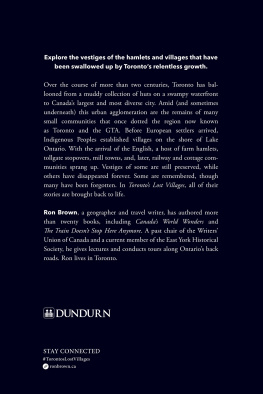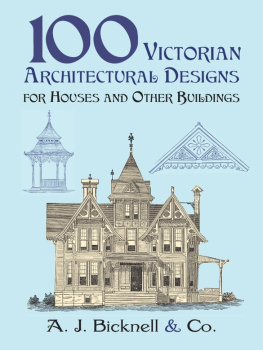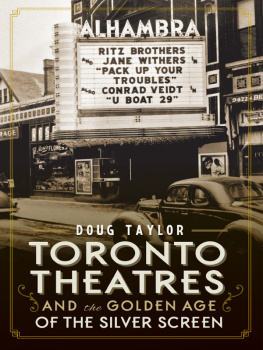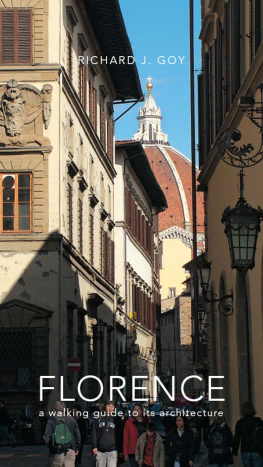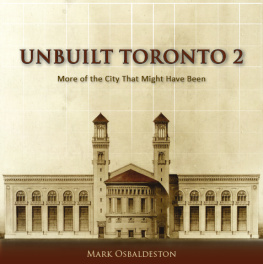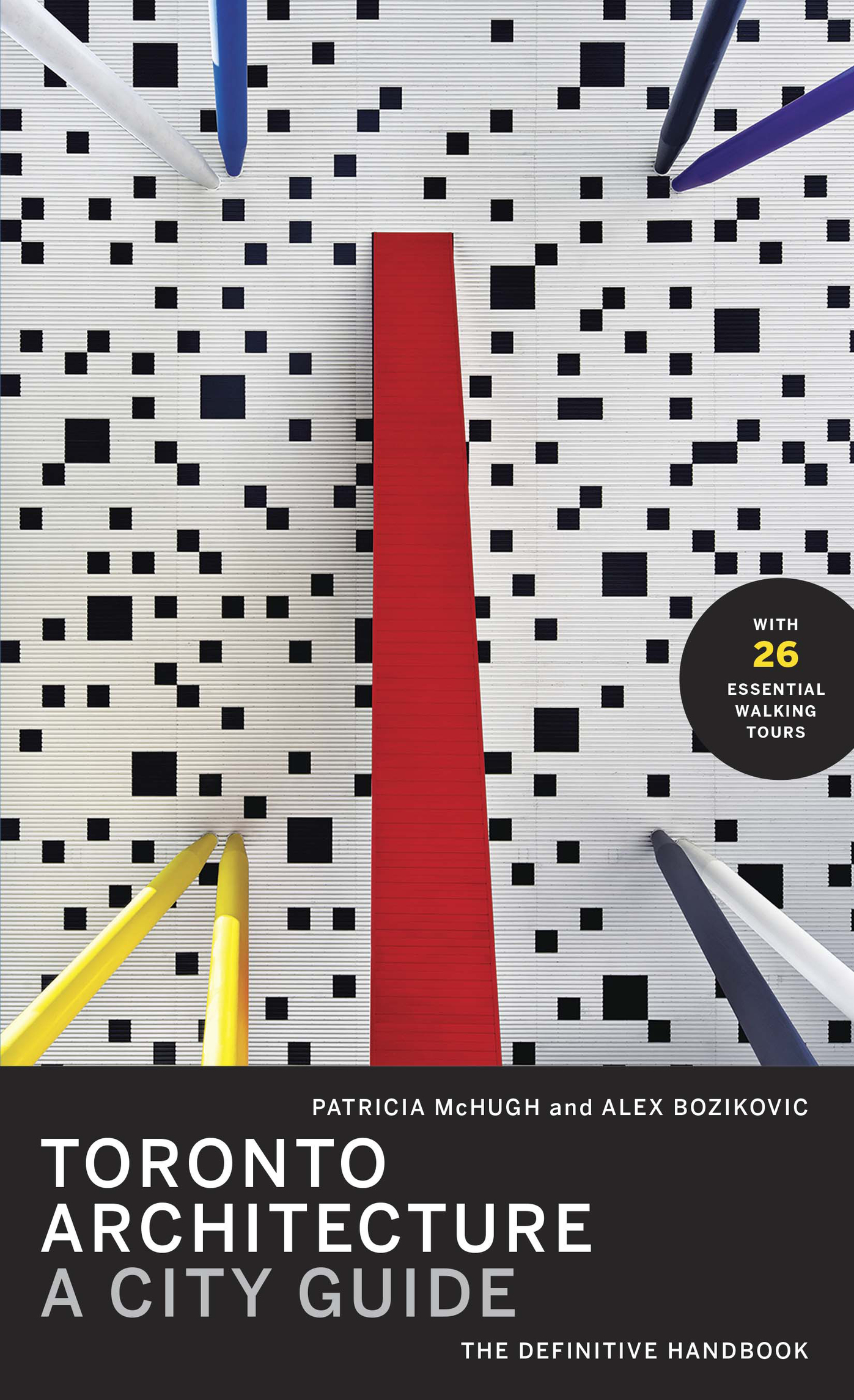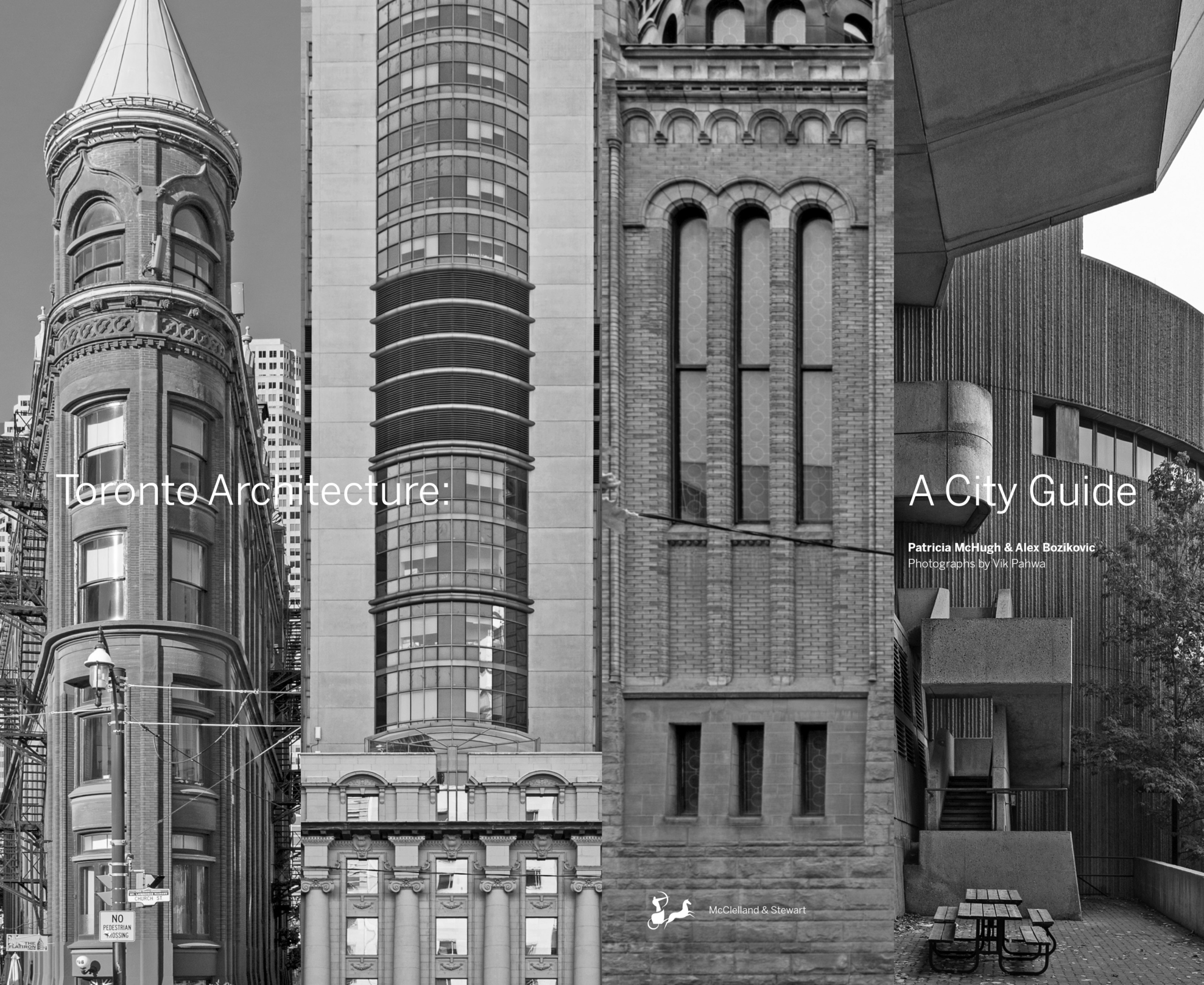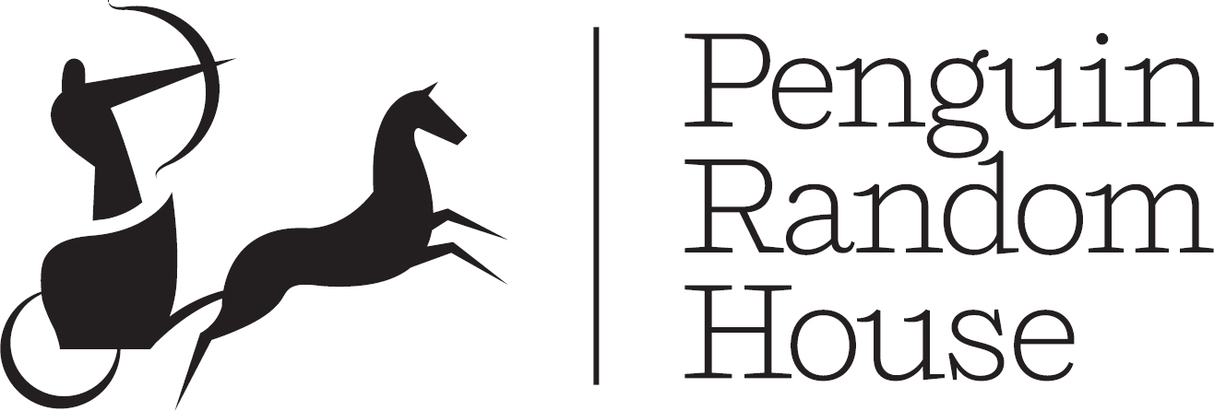McClelland & Stewart and colophon are registered trademarks of McClelland & Stewart
All rights reserved. The use of any part of this publication reproduced, transmitted in any form or by any means, electronic, mechanical, photocopying, recording, or otherwise, or stored in a retrieval system, without the prior written consent of the publisheror, in case of photocopying or other reprographic copying, a licence from the Canadian Copyright Licensing Agencyis an infringement of the copyright law.
Includes bibliographical references and index.
Issued in print and electronic formats.
ISBN 978-0-7710-5989-6 (paperback).ISBN 978-0-7710-5990-2 (epub)
1. ArchitectureOntarioTorontoGuidebooks. 2. Historic buildingsOntarioTorontoGuidebooks. 3. BuildingsOntarioTorontoGuidebooks. 4. Toronto (Ont.)Buildings, structures, etc.Guidebooks. I. Bozikovic, Alex, author II. Title.
Preface to the Guide
This book is a guide, for locals as well as visitors, to a city always in the making.
Since 2015 Toronto has been the fourth largest city in North America, after Mexico City, New York, and Los Angeles; a statistical fact that reinforces the truth, obvious to Torontonians, that something dramatic is happening here. What was once Hogtown or Muddy York has evolved into a sweeping and profoundly multicultural metropolis, and it continues to get denser, more populousand more sophisticated.
Yet if you look at the history of Toronto after about 1880, you will often find someone claiming the same thing: the city is coming into its own. Looking at Torontos architecture has convinced me that this is the case. Reshaped by the port, the railways, and the automobile, and progressively larger waves of immigration, Toronto has in fact rebuilt itself over and over again.
This book is, in part, a tool to understand that story. The brick, stone, and concrete of Toronto record its metamorphoses from the little Georgian town of the 1850s to the master-planned modern city of the 1950s, and to todays evolving hybridshaped by architects and other professionals who have shown sensitivity, creativity, and brilliance.
When Patricia McHugh (19342008) completed the second edition in 1989, she might not have imagined how different Toronto would be 28 years later. Even though the 1980s had brought a tremendous surge of building to the city, whats happened since 1996 dwarfs it. In 1989, old industrial neighbourhoods near the downtown core were in decline; today they are booming with residential development, packed with office workers, apartment dwellers and their babies. Cities across North America have seen an influx of people to their centres in the past two decades, and this shift has been dramatic here; while the city began to add tall buildings in the 1950s, it now has many more of them.
Also, the map has changed. The six municipalities of Metropolitan Toronto became, in 1998, simply Toronto. Walkable neighbourhoods from the years before 1930 and the car-oriented suburbs built after World War II are all part of the same political territory. And those suburbs are no longer entirely bastions of prosperity; they are increasingly older and poorer, and it is there that many new Canadians settle.
Conversely, central neighbourhoods that were still gentrifying in the mid-80s are now highly desirable and accordingly expensive.
That would have made sense to McHugh. Born in Los Angeles in 1934, she had lived for a decade in New York and London before landing here with her family in 1972following the trajectory of Jane Jacobs, and sharing Jacobss love for a walkable and diverse cityscape. When McHugh, a journalist and editor, began working on this guidebook in the early 1980s, that sort of urbanism was out of fashion in many places; but it had continued to hold sway in the former City of Toronto (the core of the present city). Architects, planners, and citizen activists had remained in these older neighbourhoods, and defended them against too many dangerous big ideas. One of the distinct threads in Toronto architecture is a respectful conversation between the past and present.
Today, those central neighbourhoods are perhaps too well-defended against modest change. But other areas of Toronto have become improbably lively. In her introduction to the second edition, McHugh wrote that the look of Toronto will turn upon the ways in which Torontos patterns of diversity are nourished in the years to come.
On this point she would have been, I think, pleased. Neighbourhoods from the core all the way to Brampton have been reshaped by new arrivals from across the world. And while that diversity has not really penetrated the world of architecturethe profession is still ruled by Canadian-born white mentheres no question that the city and the region are more open to new ideas.
Toronto, and the Greater Toronto Region, have a much more confident sense of their own identity. McHugh wrote: A great city is one where differences not only exist, but where differences create lively encounter and open discourse. It is only through such discourse that Toronto can genuinely acquire a sense of itself as a good and fruitful place to be. Today, the city is getting closer than ever to that ideal.
The book is organized into a series of discrete tours. The first 22 of these roughly follow Patricia McHughs itinerary in the 1989 second edition, and can each be covered on foot in an afternoon.
I have added one section on the waterfront, which in the 1980s was far less developed; today it is filled with sites of interest. The second new section covers what I call The Suburbsthe vast and mixed zone beyond the edges of the old City of Toronto. This goes from streetcar suburbs such as Leslieville to the work-in-progress of downtown Mississauga. This section of the book is far from comprehensive, but gives a flavour of the architectural and planning history of the past century.
Like McHugh I have mixed architectural observations and commentary on the architecture of the city with some thoughts on the social and cultural history that shaped the buildings. I have also added references to planning ideas and works of landscape architecture, which play an increasingly important role. I hope you will use this book to explore, enjoy, and argue about what Toronto is and what it should become.


